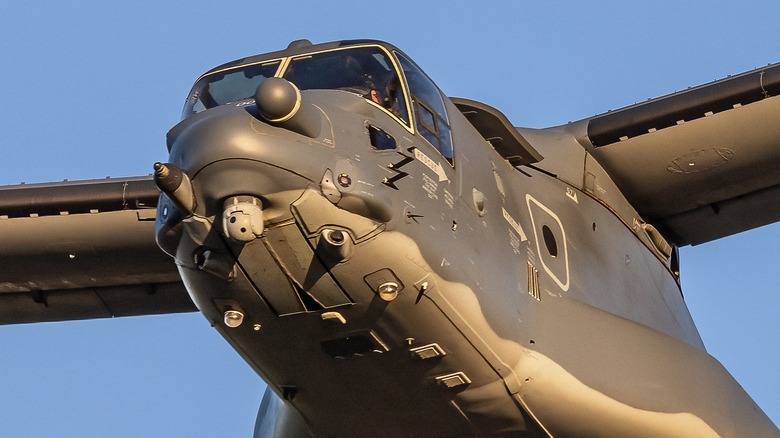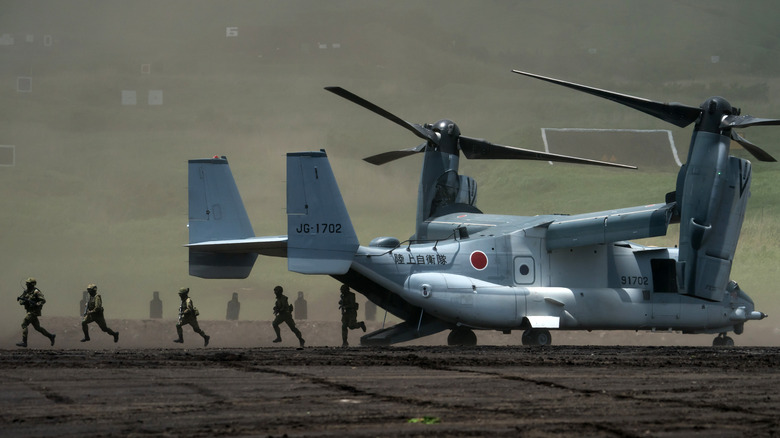Why The CV-22 Osprey Was A Game Changer For Aerial Operations
The V-22 Osprey has always been a bit of an oddball among combat aircraft. Its tiltrotor engines left it in a curious corner of aviation design, neither a proper helicopter nor a conventional turboprop-powered plane but somehow both at once. Its test phase was also infamously fraught and long drawn out; there's a whole Wikipedia page titled just "Accidents and incidents involving the V-22 Osprey," in fact.
Over the course of its development, the Osprey became a bit of a byword for military funding boondoggles. Its many accidents led to heated debates over its funding in Congress and among military officials. Even the tiltrotor aircraft's fans had trouble defending it in the face of public failures, while its critics said the Osprey's continued funding verged on corruption, with the aircraft functioning more as a jobs program for the American aerospace industry than a functioning design.
So what if we told you that, when the odd, bit-of-both aircraft finally chased out all its gremlins and entered active deployment, it became one of the most important vehicles in American airborne service?
The odd duck becomes a swan
To be clear, the development of the V-22 was every bit the goat rope the press at the time reported. First taking to the air in 1989, the V-22 would not enter full-scale service until 2007. The intervening time was taken up by relentless debate, constant repairs and redesigns, and too many tragedies. Tragically, 30 crewmembers died in testing accidents between 1991 and 2006, including seven in front of a gathered audience at Marine Base Quantico in 1992.
That accident grounded the aircraft for 11 months. It may also have saved it, and in doing so, saved the lives of American service members all over the world. Having received extensive redesigns, repairs, and updates, when the Osprey was finally ready, it proved to be one of the most flexible and versatile designs in military aviation. It serves the vital role of delivering cargo and personnel at long range, maximizing the tiltrotor design's ability to land on a dime and operate with minimum fuel consumption. To date, the Air Force and Marine Corps both use the CV-22 variant to deliver cargo and deploy their special forces. The Navy is in the process of adopting its own variant, the CMV-22B, to serve as a cargo and transport craft between ships at sea.

